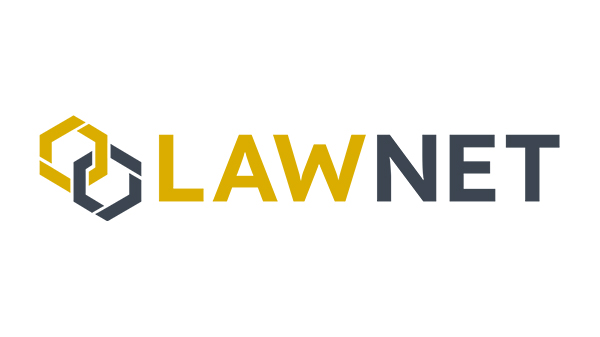Eight steps to resilience in 2021 (part one)
by Chris Marston, Chief Executive of LawNet
Originally published in Solicitors Journal, January 2021
Steps 1-4: Getting analytical
It’s a well-worn cliché to say the legal sector faces unprecedented challenges in the year ahead. Each year of the past decade has given us a headline that encapsulated the latest bubble of uncertainty, whether it’s LASPO or price transparency. This time the challenge has greater resonance, despite being harder to pin down in a headline.
At this inflexion point, moving from the Covid-19 tsunami of 2020 into the year ahead, we feel some renewed hope thanks to the news on vaccines, but we are still heading into unknown territory. No one can predict what is going to happen to the economy, nor how deep will be the impact of Brexit, or the extent to which we will go back to doing the things that constituted ‘normal’ life before the pandemic.
As Ed O’Rourke, CEO & partner of Ashtons Legal in East Anglia, says: “We face a volatile, uncertain and complex future. I believe the biggest leadership issue is how to manage in that environment; how to instil calm confidence in our people, while being mindful of the mental health challenges arising from the demands of working differently.”
While the future may be hard to decipher, I believe that many law firms are better placed than ever before to tackle what lies ahead. Writing this as we head towards the close of the year, I can see many who have exceeded all expectation over recent months, having taken many leaps of faith, but every firm, whatever its size, will need all the support it can get going forward. Opportunities undoubtedly lie ahead, but preparedness is essential to seek out and take advantage when they arise.
Missing face to face events for training, development and networking, we moved online early during the pandemic, establishing a series of regular online discussion groups for LawNet members, enabling them to share with each other and to discuss issues with a range of specialists. At the end of 2020, we asked our leaders’ forum to reflect on their leadership role during this year’s crisis.
They described three phases: the first, during the early months, was all about hands-on problem solving to achieve business continuity and resolve immediate operational challenges. By the second phase, things were ticking along, and their focus shifted to supporting and encouraging people, reassuring them that things would be ok. Going forward, they identified the need to shift from operational management to strategic planning and being more future-focused. Underpinning each of these phases was a concern about the toll on the mental health and wellbeing of their people.
Knowledge sharing is a founding principle for LawNet, so we asked some of the experts who support our firms regularly during the year, together with several keynote speakers from our recent conferences, each internationally renowned specialists, to give their top strategic tips for taking firms into the future. From this, two key themes emerged. Firstly, the need to reinforce structural facets and secondly, to focus on being more human with our people and clients. Encompassing these strands, the word ‘resilience’ kept coming through, whether from a financial perspective, the ability of leaders to respond and lead through fast-paced change, or in caring for the psychological wellbeing of staff.
Recognising that heading a law firm in today’s economy is about being open to change and delivering on a range of talents and skills, none of our experts would suggest they have a single crystal ball vision, but each offers a particular and sharp focus on what matters most from their individual perspective.
I will be looking at their suggestions across two articles: this month drawing on the more structural, analytical aspects of getting the firm running well. Next month, focusing on the human elements of running a law firm and the emotional facets of a people-focused model. Like having the right side/left side of our brain in harmony, both elements are essential. A successful firm relies on a culture that encompasses empathy for staff and clients as well as pursuit of a strong balance sheet.
The challenge for most firms is how to focus on these sorts of leadership issues; as one participant put it: “away from all the monkeys that keep landing on my desk”.
Certainly, managing isn’t leading, and leadership is what will count in delivering a robust, resilient law firm for tomorrow. It’s likely that many of us will have spent too much time this year on the dancefloor, and not enough time up on the balcony looking down – a great analogy offered by one of our experts to encourage firms to focus on the strategy, not just the everyday.
Looking to the specifics, let’s start with the first steps in building a strong foundation, through financial management and harnessing technology. These are not just administrative or operational aspects but go to the heart of developing and maintaining a robust, resilient structure, and here the key messages are balance and integration.
Balance
Be realistic about debt
For Andrew Allen, professional services specialist and partner with accountants PKF Francis Clark, generous funding offers from Government schemes should be approached with caution. The potential level of debt available is, he says, unlikely to be sustainable, urging caution and checking affordability in the context of partner capital funding. With profit draws being deferred, firms should look carefully at their policy for retaining current account balances to bolster partner funding.
An overhead balancing act
Allen highlights the importance of a balanced approach to overheads too. Many firms took swift action on costs and people capacity, making them well-placed to manage the first six months of the year, which look set to be more difficult. But it is possible to do too much, too quickly when it comes to people capacity, without looking at the bigger productivity picture. With many redundancies having been among support staff, senior fee earners may have been forced to spend too much time on admin which in the long term is neither cost-effective or playing to their strengths.
Alisa Willows, managing partner at LawNet firm Wolferstans Solicitors in Plymouth:
This year was inevitably reactive and about operational effectiveness. Going into 2021 we will be shifting towards a deeper focus on people, both clients and employees.
Engagement and feedback will be vital to keep everyone connected and our intention is to reduce our property commitments and for everyone to work from home for part of the week wherever possible. As leaders, we will need to be flexible going forward, just as our staff have been in their response so far.
The main attraction
Finally, with the focus on retaining and attracting talent, Allen suggests formulating a package of benefits that makes financial sense for the firm, while accommodating and balancing increasingly diverse attitudes among employees and partners around remote working, balancing domestic life and office costs.
Integrate
Embracing integrated tech solutions
Still on efficiencies, but turning to technology, Derek Southall of Hyperscale Group says firms should be exploring the huge capability of Microsoft 365. This is software-as-a-service with the potential to replace a raft of legacy IT. Firms still using stand-alone practice management, document and email management systems need to make the shift to an integrated, automated dashboard-style approach to better serve clients and streamline administrative processing.
Catering for capabilities
Completing the holistic approach, Southall suggests firms think about what capabilities they need for the future to operate efficiently and serve clients, then identify software to support that. This can help avoid a solution-based overload and save time and money.
Bearing in mind the role played by tech in enabling us all to continue in business during the pandemic, it will be interesting to see how IT strategies play out over the coming year, and whether we see this featuring as a higher priority at board level in future.
Next on the list for our expert contributors, is how to get the organisational structure right for our people.
Engage
Change through colleagues
In complex and fast-moving situations, where organisational structures are likely to flatten, the traditional top-down approach is less effective, says coach and people developer Chris Sweetman, as people need to be part of change, not subjected to it. Instead, change should be trialled and discussed, as having genuine two-way conversations with colleagues will generate better results.
This resonates with Alisa Willows who says: “We have been reflecting on the need to listen to clients and employees, and not make assumptions about what they need and want in the future. The opportunity to permanently reinvent how we deliver services is there, as everyone was forced into the online experiment at the same time.”
When “what” beats “how”
A coaching style of leadership, where people are encouraged to think and focus on outcomes - the what - builds capability within teams. Leaders who would otherwise be focused on the how are released from doing the thinking for their teams, with the pay-off being more time and headspace for strategic thinking.
Keeping in touch
Strategy guru Andrew Hedley, who brings his wealth of knowledge of working with law firm leaders, from global firms to regional players, to the leadership challenge, argues that regular contact between managers and their team members should be a priority in the new ways of working. Evidence from Gallup shows that frequency of feedback is a game changer in achieving staff engagement but is inevitably harder to achieve with agile working.
Cat MacLean at MBM Commercial LLP recognises this: “Frequency of feedback is something that I struggle with as we are all busy and it can be hard finding the time to have those one-to-one chats that would come so easily in the office – but I know we have to work hard to make sure they happen, and it makes such a difference when they do.”
Strategise
The final step proposed by our experts in getting the structural mix right is how leadership shapes the firm strategically.
According to Hedley, rather like a long-distance runner, we must be fast, flexible, and nimble when we hit unexpected cracks in the road:
Fleet of foot
Focusing on the fundamentals but building in flexibility is vital in a fast moving, uncertain world. That means staying close to clients, engaging with people, and ensuring core competencies such as communication and teamwork are on point. Echoing Andrew Allen’s financial credo, Hedley stresses a tight rein on overheads and managing cash, together with a review of property commitments. And flexible working patterns are an opportunity to redefine how and when people work, to build in long term agility.
Make things happen
Such flexibility and agility equips us to respond and adapt to change. Now, more than ever before, it’s vital that leaders embrace change as the norm, says Hedley. With this comes a need to anticipate, and scenario modelling should be a feature of our planning. Then, leaders must be prepared to lead change, engaging people with a clear direction, shared sense of purpose and vision.
This aligns with learning at Yorkshire member firm Eaton Smith, where partner Deborah Melluish says: “The firm, and everyone in it, adapted at speed to new and very different working practices - and continued to adapt as Government advice and guidelines changed throughout the crisis. For the future we will be harnessing that ability to embrace change quickly, to keep our business strong and to take advantage of opportunities.”
For Cat MacLean, partner with Edinburgh firm MBM Commercial LLP:
Not going backwards, understanding and planning for potential change really chimes with me. We previously paid lip service to flexible working but were innately a little suspicious of it. Through the pandemic we have seen how well people work from home, and how liberating it has been for lots of them.
We are already planning for a new norm where most people undertake a blended model of some work from home and some office based work – but we need to listen, really listen, to what people want. It is clear from the staff survey we ran in the summer that people want to do things differently post-pandemic, and it is clear from current performance that it will be hugely beneficial for us as a business.
As we head into 2021, preparedness and openness will be the defining factors, if we are to face the year, no matter what unfolds.
I will leave the last word to Andrew Hedley, who suggests we will see three types of firm emerge over the coming period – those that made things happens, those that watched things happen, and those that wondered what happened.
In a fast-moving world, with imperfect information, it will be critical to be prepared to make decisions and act upon them. This brings risks, but no risk is as great as doing nothing.







